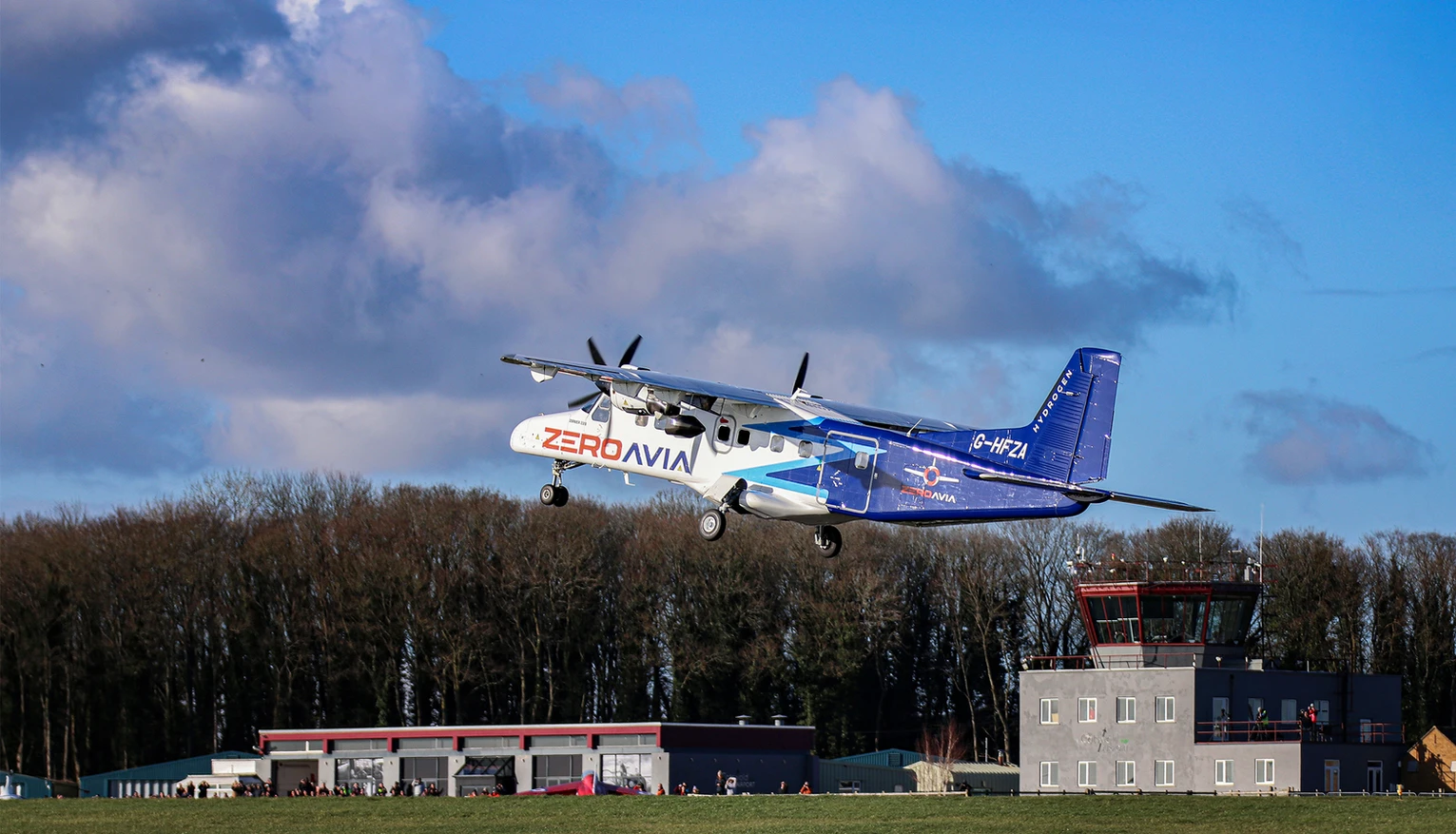


Aviation Startups Betting Big on Hydrogen-Powered Engines

The New Momentum Behind Hydrogen Flight
A new generation of aviation startups is pushing hydrogen-powered engines closer to reality as the industry positions itself for cleaner long-term growth. Their work is transforming the narrative around sustainable flight and gaining attention from major aviation leaders like Airbus and Boeing, which have both expressed interest in next stage propulsion systems. Hydrogen has resurfaced as a serious contender in the effort to cut emissions, largely because startups have the flexibility and speed needed to test new concepts that established players sometimes struggle to explore.
The momentum behind hydrogen has surged as organizations across aviation face growing regulatory and public pressure to reduce environmental impact. Traditional jet fuel emissions have driven the industry to examine energy alternatives, and hydrogen offers a pathway with dramatically lower emissions when produced through renewable energy. Aviation startups are accelerating development timelines with test flights, engine prototypes, and infrastructure research supported by investors interested in clean technology.
Companies such as ZeroAvia and Universal Hydrogen are at the forefront, demonstrating real progress in hydrogen fuel cell propulsion and modular hydrogen delivery systems. Their achievements, combined with support from large industrial firms like Linde and Plug Power, are giving hydrogen aviation a stronger foundation than ever before.
Why Hydrogen Is Gaining Renewed Attention
Hydrogen is reemerging as a promising aviation fuel due to several intersecting developments in technology, regulation, and market dynamics. Airlines face mounting pressure to reduce emissions and modernize their fleets, and hydrogen aligns with multi decade sustainability targets. With the aviation sector accounting for a significant percentage of global emissions, cleaner propulsion alternatives are drawing strong interest from governments and private investors.
Investment in hydrogen infrastructure has accelerated beyond aviation, driven by global companies like Shell through its Shell Aviation division and industrial energy leaders like Siemens Energy. Their involvement helps reinforce confidence in hydrogen as a viable long term energy pathway and supports startups that rely on broader ecosystem development.
Battery-electric aircraft offer benefits for very short flights, but their weight, density limits, and range constraints reduce their suitability for larger commercial operations. Hydrogen possesses a far higher energy density by weight, creating a more realistic path for powering regional and medium range aircraft. Aviation startups recognize this advantage and are designing systems that balance storage needs, engine performance, and overall aircraft weight to deliver practical solutions.
Startups Leading the Next Wave of Hydrogen Propulsion
Hydrogen aviation startups are developing multiple propulsion approaches, each addressing unique technical challenges. ZeroAvia continues to advance hydrogen fuel cell propulsion, targeting regional flight use cases where fuel cell systems offer clear advantages. Their test flights have attracted partnerships with airlines and manufacturing partners looking to understand future adoption timelines.
Universal Hydrogen is building a modular hydrogen capsule system that simplifies airport fueling requirements. Their approach enables hydrogen to be delivered in sealed units that can be loaded directly onto aircraft. This strategy reduces the need for airports to build hydrogen pipelines or storage tanks in the early phases of adoption, lowering infrastructure barriers that would otherwise slow the market.
Electric propulsion innovators like MagniX continue to support the hydrogen ecosystem by developing electric motors that pair with hydrogen fuel cells. As these motors become more powerful and efficient, aviation startups can integrate them into hydrogen-electric powertrains more effectively. This synergy helps accelerate development while reducing engineering risks.
Major aerospace companies are also contributing. Airbus has publicly released hydrogen aircraft concepts through its ZEROe program, while Rolls Royce has been testing hydrogen combustion engines. GE Aerospace is exploring hydrogen fuel compatibility within next generation engine platforms. These contributions highlight the increasing seriousness of hydrogen within mainstream aviation.
Smaller research groups like H2Fly and AeroDelft continue experimenting with lightweight designs and student led prototypes. Although their scale is much smaller, their research provides additional data points that support larger commercial development programs.

Infrastructure Challenges and What It Means for Growth
Hydrogen aviation faces significant infrastructure challenges, and addressing these will be essential for widespread adoption. Hydrogen storage requires cryogenic or high pressure systems, along with specialized handling equipment that most airports currently lack. The cost and complexity of such systems make early adoption difficult, but progress is underway thanks to large industrial companies investing in hydrogen expansion.
Global hydrogen suppliers like Linde and Plug Power are building new production and distribution hubs across multiple regions. Their networks are expected to play a major role in supplying aviation grade hydrogen in the future. The involvement of companies like Siemens Energy in electrolysis and green hydrogen production also strengthens the long term infrastructure outlook.
Some startups are working to bypass early infrastructure barriers entirely. Universal Hydrogen’s modular tank system reduces dependency on airport installations, while ZeroAvia is collaborating with airports to plan future hydrogen refueling sites that can scale with demand. Meanwhile, Shell Aviation and other large energy companies are studying how traditional fuel logistics can adapt to handle hydrogen at commercial volumes.
Government incentives targeting renewable fuels and next generation aviation technologies are expanding. Many nations now offer support for hydrogen research, infrastructure investment, and flight testing. These initiatives help startups access technical support and funding that strengthen long term commercialization paths.
The Market Potential for Hydrogen Aviation
Hydrogen aviation represents an attractive opportunity within the broader clean transportation market. Regional aviation stands out as the strongest initial application because current hydrogen systems align well with short and medium range aircraft operations. These routes offer frequent flights and predictable schedules, making them ideal for testing reliability and cost effectiveness.
Airlines are forming exploratory partnerships to understand how hydrogen aircraft will fit into future fleets. Some carriers have signed memoranda of understanding with hydrogen startups to participate in demonstration programs. This early groundwork positions airlines to adopt hydrogen aircraft once certification is complete.
Cargo aviation also presents significant opportunity. Cargo carriers can adopt new propulsion technologies more quickly because they focus on operational efficiency rather than passenger comfort. Their structured flight schedules make hydrogen integration easier, and hydrogen propulsion could reduce long term fuel costs while improving sustainability performance.
Regulatory Progress and Certification Pathways
Hydrogen aviation development involves navigating highly detailed regulatory processes. Organizations like the FAA and EASA require extensive testing on fuel behavior, system safety, tank integrity, emergency procedures, and long term engine performance. Startups work with regulators early to clarify expectations and avoid delays in later certification phases.
Regulators are demonstrating greater openness toward emerging propulsion systems by creating working groups, research collaborations, and guidance documents aimed at hydrogen aviation. This evolving environment helps startups build toward certification more efficiently while maintaining safety standards.
Large aerospace firms like Rolls Royce, GE Aerospace, and Airbus support this transition by sharing test data and participating in joint research programs. Their involvement helps regulators develop consistent frameworks, which benefits the entire hydrogen aviation ecosystem.
Business Opportunities Surrounding Hydrogen Aviation
Entrepreneurs interested in entering this space do not need to create aircraft to participate. Hydrogen aviation touches multiple industries, opening opportunities across engineering, logistics, materials, software, infrastructure, and safety. Companies that develop hydrogen storage systems, fueling equipment, advanced materials, or safety technologies will play critical roles in supporting aircraft operations.
Airports preparing for hydrogen will require advisors, planners, engineering firms, and construction partners capable of integrating hydrogen systems into long term infrastructure plans. Firms that specialize in airport modernization, clean energy design, or sustainability strategy can benefit from this transition.
Non engineering opportunities exist as well. Policy consultants, data companies, workforce training providers, and software developers will all contribute to the development of hydrogen aviation. The ecosystem is broad, and the industry will rely on a wide variety of businesses as adoption expands.
Closing Remarks
Hydrogen powered aviation is progressing rapidly thanks to startups and major aerospace players that are advancing next generation propulsion technologies. Backed by industrial leaders such as Airbus, Boeing, Rolls Royce, GE Aerospace, Shell Aviation, Siemens Energy, Linde, and Plug Power, the sector is moving toward meaningful commercial integration. As hydrogen infrastructure develops and certification frameworks evolve, hydrogen aircraft are positioned to play a central role in the future of sustainable flight.
*Photo-credit to ZeroAvia
*Photo-credit to Airbus





